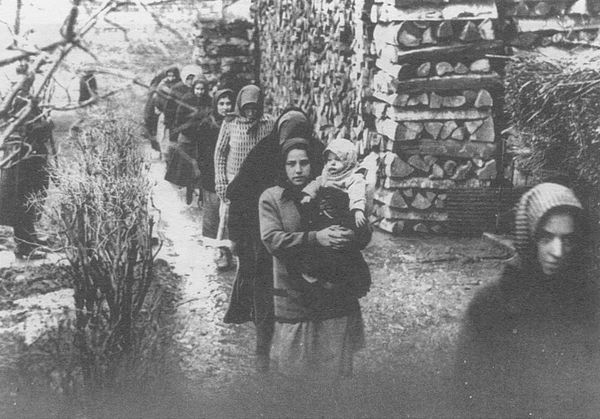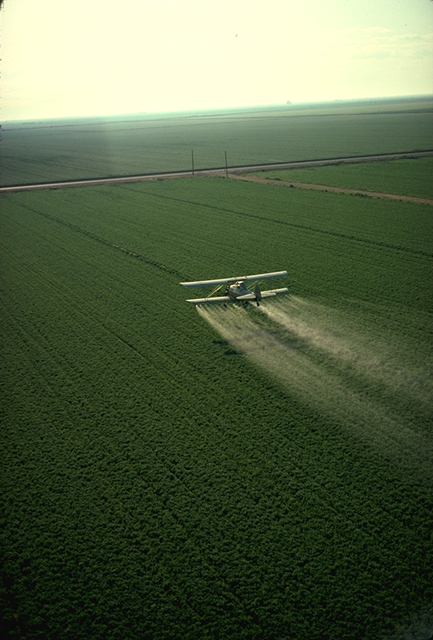|
Flypaper
Flypaper (also known as a fly ribbon, fly strip, fly capture tape, or fly catcher) is a fly-killing device made of paper coated with a sweetly fragrant, but extremely sticky and sometimes poisonous substance that traps flies and other flying insects when they land upon it. Fly paper is considered a pest control device, and is subject to regulation in many countries. In the United States of America, the device may be subject to the Federal Insecticide, Fungicide, and Rodenticide Act. Toxicity The poisons used in some older types of flypaper could potentially be toxic to humans and other animals. Historically, metallic arsenic (a well-known toxin to humans) was used in flypaper. Arsenic extracted by soaking flypaper in water has been used by several convicted murderers, among them Frederick Seddon, Florence Maybrick, and the Angel Makers of Nagyrév. Most modern brands of flypaper contain no poison, but only a non-toxic adhesive such as rosin. Effectiveness Flypaper is as ... [...More Info...] [...Related Items...] OR: [Wikipedia] [Google] [Baidu] |
Frederick Seddon
Frederick Henry Seddon (sometimes spelled Sedden) (21 January 1872 – 18 April 1912) was a British murderer hanging, hanged in 1912 for the arsenic poisoning murder of his lodger Eliza Mary Barrow. Background Frederick Seddon was born in Liverpool to William Seddon and Mary Ann (Married and maiden names, née Kennen) on 21 January 1872. He married Margaret Ann (''née'' Jones) (1878–1946) on 31 December 1893, and had five children with her: William James Seddon (b. 1894); Margaret Seddon (b. 1896); Frederick Henry Seddon Jr (b. 1897); Ada Seddon (b. 1905), and Lilian Louisa Agnes Emma Seddon (b. 1911). His father also lived with him. The names of William and Frederick Seddon appear in the visitors' book for the Metropolitan Police Black Museum, Crime Museum on 1 December 1905; the museum was not open to the general public and the reason for their visit is unknown. At one time Seddon had been a Freemasonry, Freemason, being initiated into Liverpool's Stanley Lodge No. 1325 in 1 ... [...More Info...] [...Related Items...] OR: [Wikipedia] [Google] [Baidu] |
Pest Control
Pest control is the regulation or management of a species defined as a pest; any animal, plant or fungus that impacts adversely on human activities or environment. The human response depends on the importance of the damage done and will range from tolerance, through deterrence and management, to attempts to completely eradicate the pest. Pest control measures may be performed as part of an integrated pest management strategy. In agriculture, pests are kept at bay by mechanical, cultural, chemical and biological means. Ploughing and cultivation of the soil before sowing mitigate the pest burden, and crop rotation helps to reduce the build-up of a certain pest species. Concern about environment means limiting the use of pesticides in favour of other methods. This can be achieved by monitoring the crop, only applying pesticides when necessary, and by growing varieties and crops which are resistant to pests. Where possible, biological means are used, encouraging the natural en ... [...More Info...] [...Related Items...] OR: [Wikipedia] [Google] [Baidu] |
Florence Maybrick
Florence Elizabeth Chandler Maybrick (3 September 1862 – 23 October 1941) was an American woman convicted in the United Kingdom of murdering her husband, cotton merchant James Maybrick. Early life Florence Maybrick was born Florence Elizabeth Chandler in Mobile, Alabama. She was the daughter of William George Chandler, a one-time mayor of Mobile and a partner in the banking firm of St. John Powers and Company,Maybrick, Florence E. ''Mrs Maybrick's Own Story: My Lost Fifteen Years'' Funk and Wagnalls Company (1904) and Caroline Chandler Du Barry, née Holbrook. Florence's father had died before her birth. Her mother remarried a third time in 1872 to Baron Adolph von Roques, a cavalry officer in the Eighth Cuirassier Regiment of the German Army. Marriage While travelling by ship to the United Kingdom with her mother, Florence met James Maybrick, a cotton merchant from Liverpool. Other passengers were either amused or shocked by a 19-year-old girl spending so much time alone ... [...More Info...] [...Related Items...] OR: [Wikipedia] [Google] [Baidu] |
Angel Makers Of Nagyrév
The Angel Makers of Nagyrév (, " Tiszazug poison-mixers") were a group of women living in the village of Nagyrév, Hungary, who, between 1914 and 1929, poisoned to death an estimated 40 people. They were supplied arsenic and encouraged to use it for the purpose by a midwife or "wise woman" named Zsuzsanna Fazekas, wife of Gyula Fazekas, née Zsuzsanna Oláh (Fazekas Gyuláné Oláh Zsuzsanna). Their story is the subject of the documentary film ''The Angelmakers'' and the film '' Hukkle''. Crimes Fazekas was a middle-aged midwife who arrived in Nagyrév in 1911, with her husband already missing without explanation. Between 1911 and 1921, she was imprisoned 10 times for performing illegal abortions, but was consistently acquitted by judges supporting abortion. In Hungarian society at that time, the future husband of a teenage bride was selected by her family and she was forced to accept her parents' choice. Divorce was not allowed socially, even if the husband was an alcoholic or ... [...More Info...] [...Related Items...] OR: [Wikipedia] [Google] [Baidu] |
Fly-killing Device
A fly-killing device is used for pest control of flying insects, such as houseflies, wasps, moths, gnats, and mosquitoes. Flyswatter A flyswatter (or fly-swat, fly swatter) usually consists of a small rectangular or round sheet of some across of lightweight, flexible, vented material (usually thin metallic, rubber, or plastic mesh), attached to a lightweight wire or plastic handle, wood, or metal handle about long. The venting or perforations minimize the disruption of air currents, which can be detected by the fly and allow it to escape, and also reduce air resistance, making it easier to hit a fast-moving target such as a fly. A flyswatter is ideally lightweight and stiff, allowing quick acceleration to overcome the fast reaction time of the fly (six to ten times faster than a human), while also minimizing damage caused by hitting other objects. The flyswatter usually works by mechanically crushing the fly against a hard surface, after the user has waited for the fly to ... [...More Info...] [...Related Items...] OR: [Wikipedia] [Google] [Baidu] |
Arsenic Poisoning
Arsenic is a chemical element with the symbol As and atomic number 33. Arsenic occurs in many minerals, usually in combination with sulfur and metals, but also as a pure elemental crystal. Arsenic is a metalloid. It has various allotropes, but only the gray form, which has a metallic appearance, is important to industry. The primary use of arsenic is in alloys of lead (for example, in car batteries and ammunition). Arsenic is a common n-type dopant in semiconductor electronic devices. It is also a component of the III-V compound semiconductor gallium arsenide. Arsenic and its compounds, especially the trioxide, are used in the production of pesticides, treated wood products, herbicides, and insecticides. These applications are declining with the increasing recognition of the toxicity of arsenic and its compounds. A few species of bacteria are able to use arsenic compounds as respiratory metabolites. Trace quantities of arsenic are an essential dietary element in rats, ... [...More Info...] [...Related Items...] OR: [Wikipedia] [Google] [Baidu] |
Flies And Humans
Flies are insects of the order Diptera, the name being derived from the Greek δι- ''di-'' "two", and πτερόν ''pteron'' "wing". Insects of this order use only a single pair of wings to fly, the hindwings having evolved into advanced mechanosensory organs known as halteres, which act as high-speed sensors of rotational movement and allow dipterans to perform advanced aerobatics. Diptera is a large order containing an estimated 1,000,000 species including horse-flies, crane flies, hoverflies and others, although only about 125,000 species have been described. Flies have a mobile head, with a pair of large compound eyes, and mouthparts designed for piercing and sucking (mosquitoes, black flies and robber flies), or for lapping and sucking in the other groups. Their wing arrangement gives them great maneuverability in flight, and claws and pads on their feet enable them to cling to smooth surfaces. Flies undergo complete metamorphosis; the eggs are often laid on the lar ... [...More Info...] [...Related Items...] OR: [Wikipedia] [Google] [Baidu] |
Paper Products
Paper is a thin sheet material produced by mechanically or chemically processing cellulose fibres derived from wood, rags, grasses or other vegetable sources in water, draining the water through fine mesh leaving the fibre evenly distributed on the surface, followed by pressing and drying. Although paper was originally made in single sheets by hand, almost all is now made on large machines—some making reels 10 metres wide, running at 2,000 metres per minute and up to 600,000 tonnes a year. It is a versatile material with many uses, including printing, painting, graphics, signage, design, packaging, decorating, writing, and cleaning. It may also be used as filter paper, wallpaper, book endpaper, conservation paper, laminated worktops, toilet tissue, or currency and security paper, or in a number of industrial and construction processes. The papermaking process developed in east Asia, probably China, at least as early as 105 CE, by the Han court eunuch Cai Lun, although the ... [...More Info...] [...Related Items...] OR: [Wikipedia] [Google] [Baidu] |
Pesticides
Pesticides are substances that are meant to pest control, control pest (organism), pests. This includes herbicide, insecticide, nematicide, molluscicide, piscicide, avicide, rodenticide, bactericide, insect repellent, animal repellent, microbicide, fungicide, and lampricide. The most common of these are herbicides which account for approximately 80% of all pesticide use. Most pesticides are intended to serve as plant protection products (also known as crop protection products), which in general, protect plants from weeds, fungi, or insects. As an example, the fungus ''Alternaria solani'' is used to combat the aquatic weed ''Salvinia''. In general, a pesticide is a chemical (such as carbamate) or biological agent (such as a virus, bacterium, or entomopathogenic fungus, fungus) that deters, incapacitates, kills, or otherwise discourages pests. Target pests can include insects, plant pathogens, weeds, mollusca, molluscs, birds, mammals, fish, nematodes (roundworms), and microbes ... [...More Info...] [...Related Items...] OR: [Wikipedia] [Google] [Baidu] |






_(10144905255).jpg)

